Rare Winter Storm Wreaks Havoc in Texas
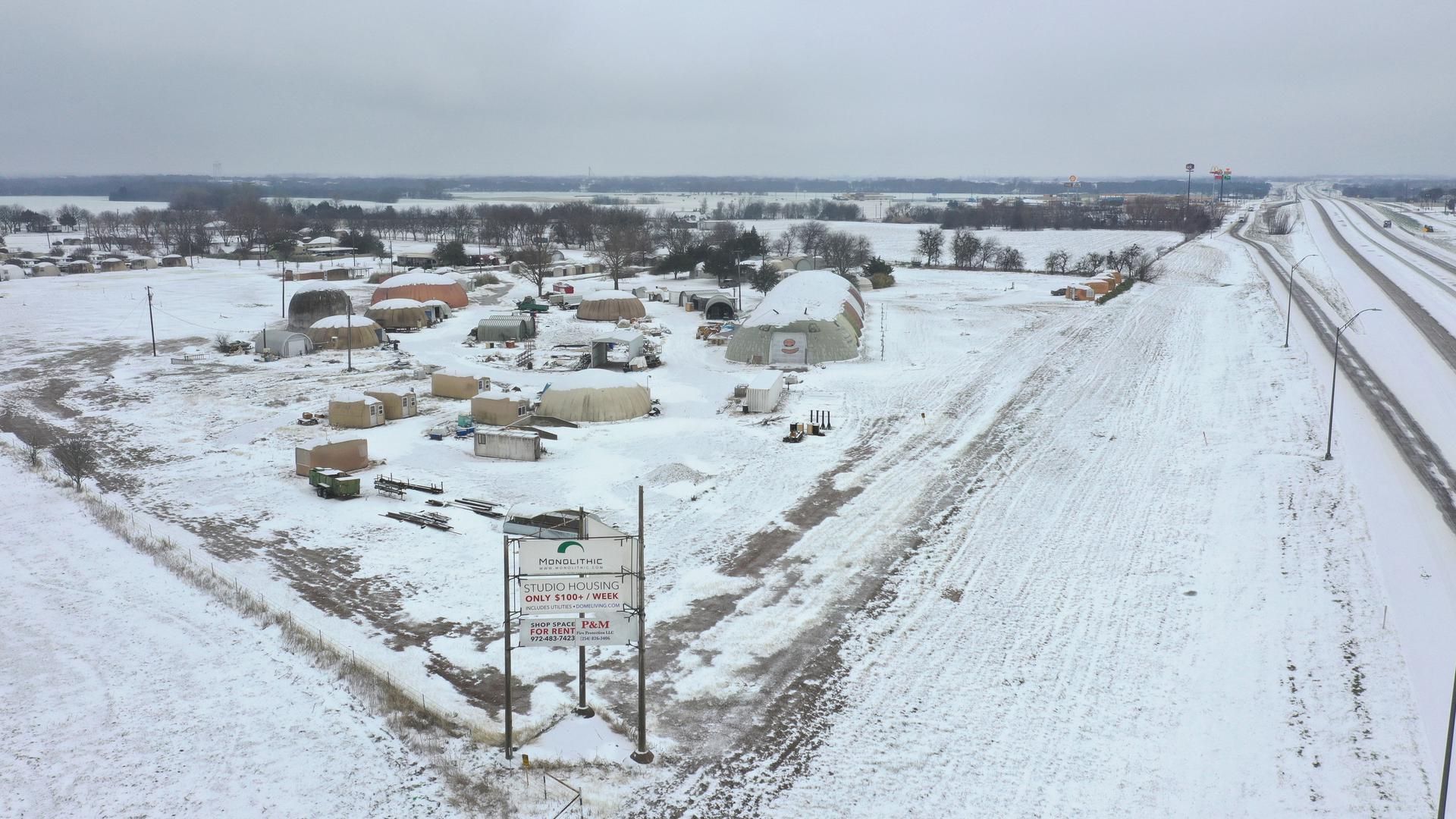
After two snowstorms, the Monolithic Dome Research Park off I-35E in Italy, Texas, looked like a winter wonderland.
It started Sunday night with snow and gusty 30 mile-per-hour winds. The temperature dropped to two degrees (–17°C)—my phone said it was zero. In nearby Italy, Texas, the water main broke on Main Street, the power went out, and water pipes froze or broke in many houses. For millions living in Texas, it was a long, difficult week and it’s going to be a while before things return to normal. It seems a little cruel that we were so lucky—we never lost power or water.
After the first night of snow, I jumped in our skid steer and plowed the office parking lot. Not something we do often in Texas. That same morning, we could go inside the manufacturing plant and keep working on Airform membranes with hardly any temperature drop in that 14,000 square foot—unheated—facility. As the day progressed, we learned about the greater energy problems across Texas. We shut off our high-powered RF welders and sent everyone home.
At home, we turned down our thermostats and worked to help our employees who were not so lucky. Some lost power for over 28 hours. Others had frozen water pipes. No major water breaks, thankfully, but lots of other challenges. We used our portable generator for one home and supplied propane to another. They got through this okay. The power is restored. Water lines are unfrozen. And typical for Texas, it’s going to be in the 70s this week.
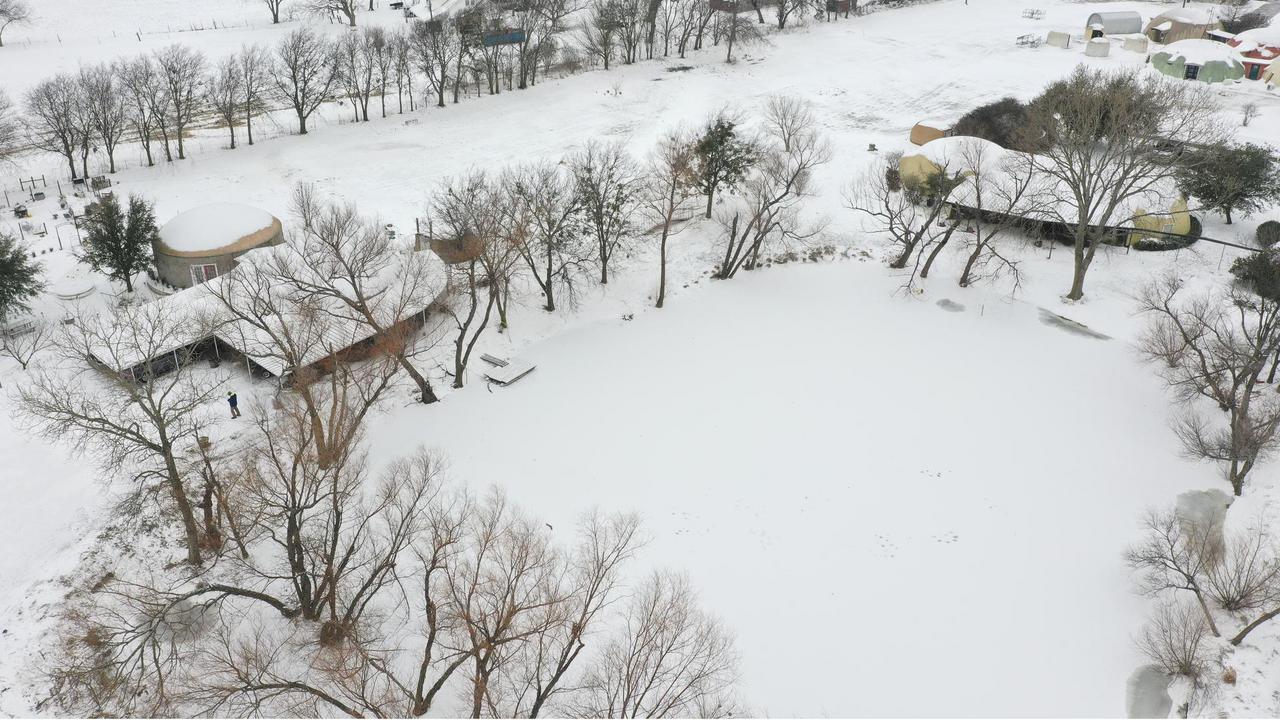
The pond in front of my house (left) completely froze over. I’ve lived here for 30 years and I’ve never seen anything like this. The pond has never frozen over. It wasn’t just a little frozen, it was 4 inches thick in some places and took three days of warmer weather to thaw.
This was a once-in-a-lifetime event for Texas. It’s hard to convey how rare this is. Cold weather brushes by once in a while, but it never stays. To have the snow and extreme cold—we were as cold as places in Alaska—caused a cascade of problems. Many homes in Texas run their water lines through uninsulated attic spaces. This has never been a problem before because it’s only cold enough to freeze pipes maybe one night a year. For that one night, you keep the house warm, heat rises to the attic space which keeps the water pipes unfrozen.
To have several days of freezing temperatures is unheard of. The demand for heat coupled with the power grid unprepared for weather this cold and we lose the heat and then pipes break.
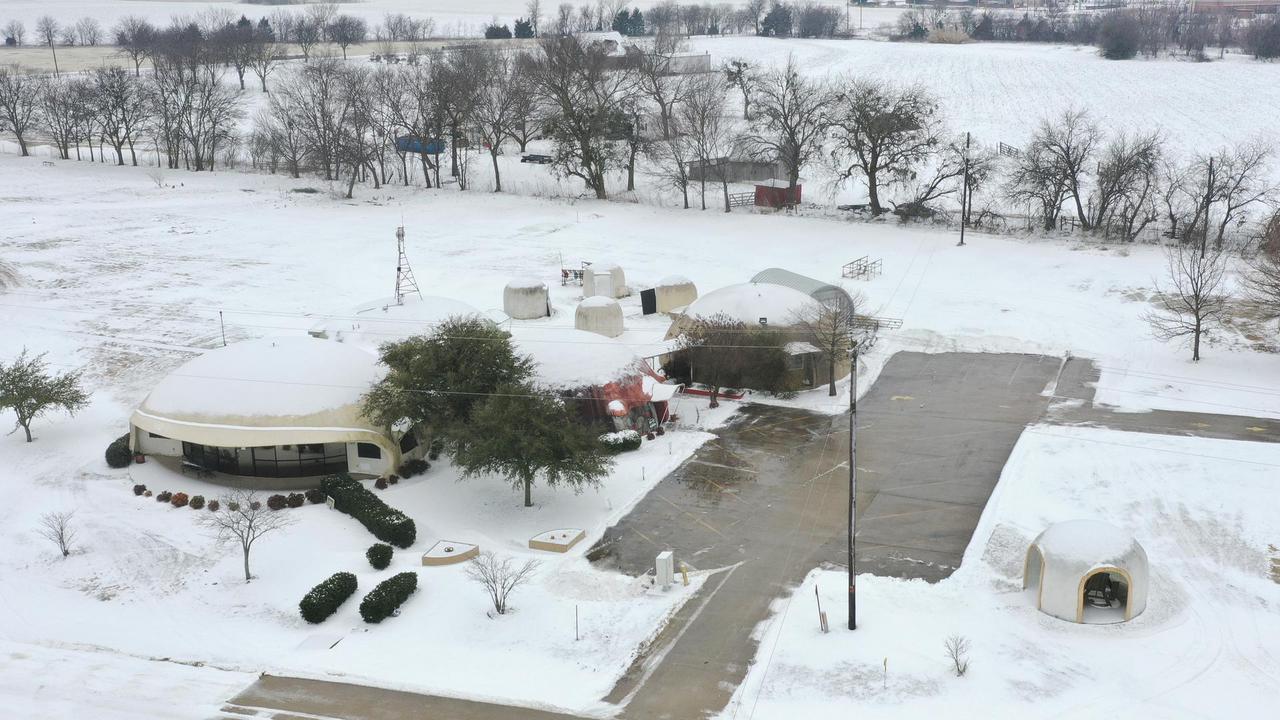
We shut down our office complex and reduced power use across our property to hopefully help reduce the load on the power grid. The skid loader made short work of clearing the parking lot.
So why am I talking about this if everything is okay and our domes were never threatened? Because people are asking what would happen if it happened to the domes.
Monolithic Domes are amazing. The insulation, coupled with the concrete’s thermal mass, creates an atmosphere that is hard to describe. Simply put, it feels the same today as it does in the middle of summer. If you set the thermostat at 70 (21°C), it just stays there. During the two-degree, 24 hour period, my heater ran for a total of 9 hours. This is a small heater, with only 30,000 BTUs. Most homes the size of mine have 100,000 BTU heaters, but even my neighbors with electricity struggled to stay warm with heaters running nearly 24/7.
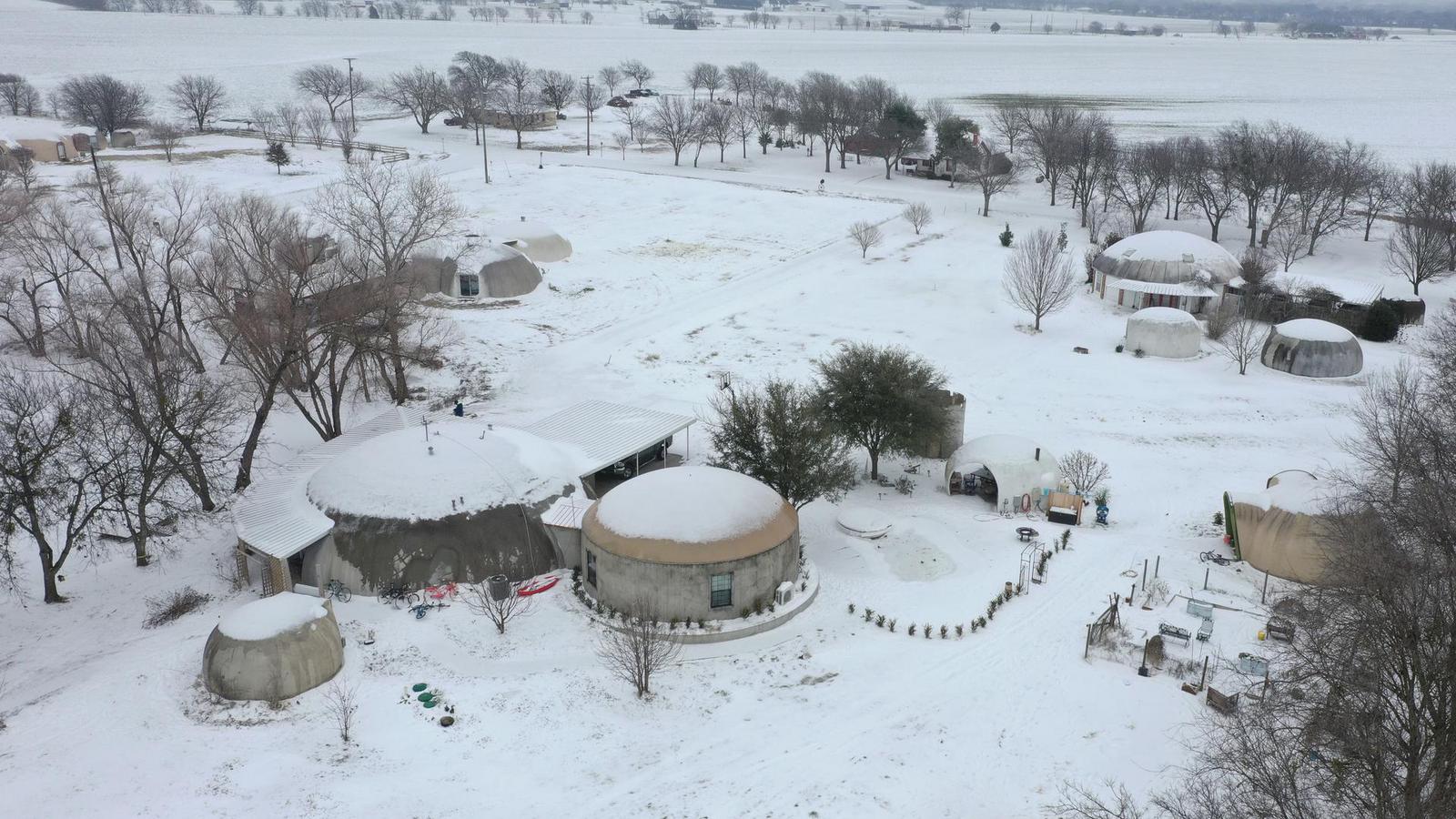
My house (left) is made of two big domes—the Callisto (left with carport) and a pipe-dome (attached). The Callisto used a small, 30,000 BTU heater to maintain a constant temperature of 70 degrees. The kids only used a tiny space heater in the pipe dome to keep it warm.
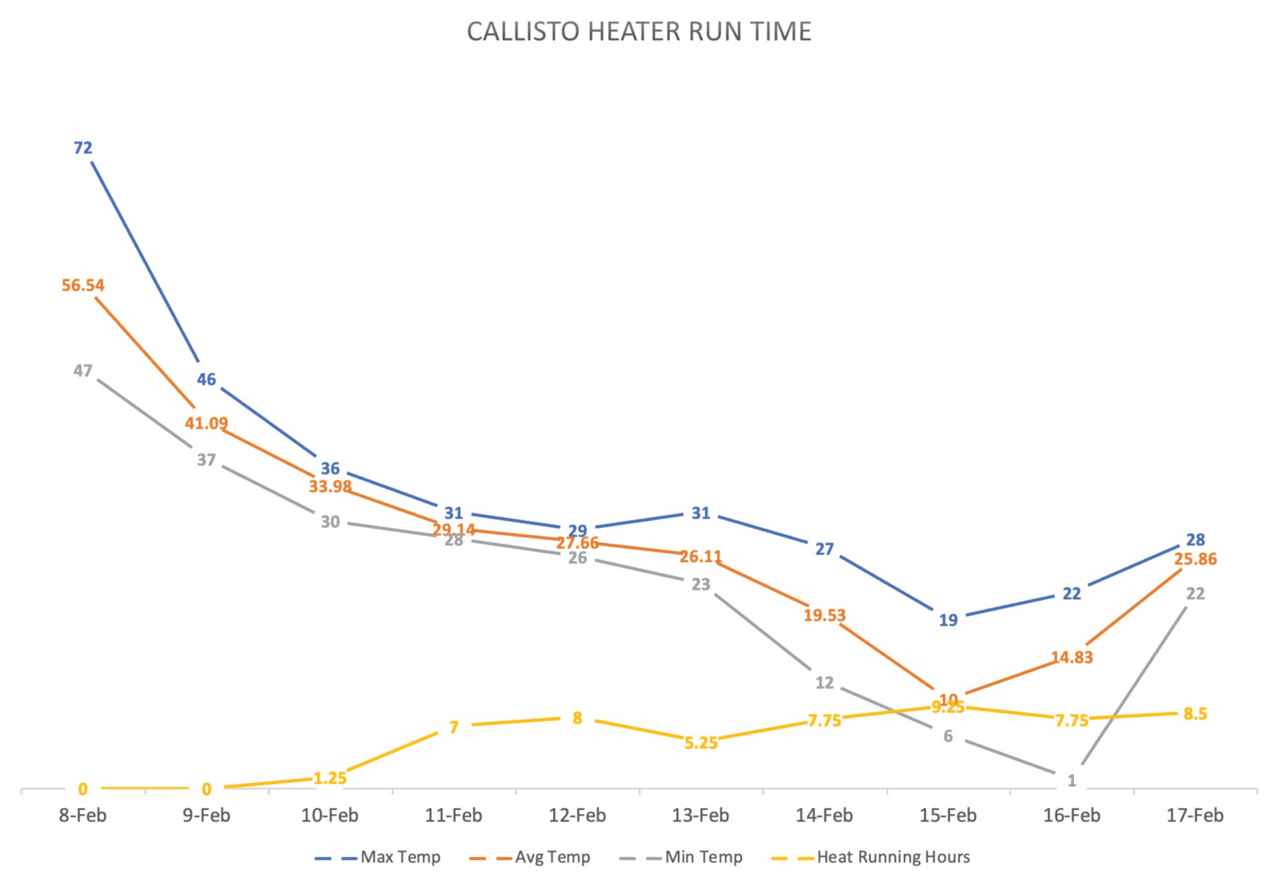
The high, average, and low exterior temperatures compared to the time required to heat the Callisto. Keep in mind that the heater in the Callisto is one-fourth to one-third the size of heaters in conventional homes.
Living in a Monolithic Dome is a practical solution for emergency preparedness. In domes, all water pipes are inside the dome envelope. No matter how long it stayed cold, even without electricity or any heat, the dome will resist changing temperature and will likely never get cold enough inside to break water pipes.
In the 1980s, there was an office dome in Idaho that lost the heater for a week where the nighttime lows were around –20 degrees (–29°C) and the daytime highs were only around 5 degrees. During that week, the dome lost only ten degrees inside. It started the week at 70 degrees (21°C) and ended at only 60 (16°C)! Think about that, 10 degrees in a week of below-zero weather. Most houses would be frozen in a single night without heat.
Practical preparation is key to unexpected emergencies. Owning and living in a home that’s prepared for extreme weather is comforting—it’s a good feeling to live in a dome that is safe and warm.
Please help!
This emergency left many Texans without adequate food and water. They need your help. We recommend donating to the North Texas Food Bank. For Texans in need, please visit the DFW Mutual Aid Fund for links to helpful resources.